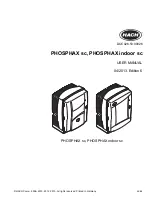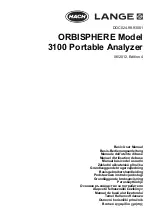
50
c
HAPTER
4:
Computer Interface Operation
F71/F41 Teslameter
4.2.1.2 Subsystem
In addition to the common commands, SCPI defines subsystem commands. If the
teslameter is considered a “system”, then the logical grouping of its various functions
can be considered different “subsystems”, forming a hierarchical “tree”. Each subsys-
tem is comprised of program headers. Together, these comprise the individual SCPI
command. The following is an example of several SCPI commands and how they fit
into the hierarchical tree:
FETCh
[:FIELd]
:DC? <[MAGNitude]|X|Y|Z|ALL>
SENSe
[:FIELd]
:MODE?
:MODE <DC|AC|HIFRequency>
:RANGe <field value>
:AUTO?
:AUTO <Boolean>
SOURce
:AOUT <XRAW|YRAW|ZRAW|XCORrected|YCORrected|
ZCORrected|MCORrected>
4.2.2 Queries
Many times, a command will have a corresponding query. Queries require a question
mark at the end of the command header. If a query requires a parameter, place the
question mark at the end of the header and before the query parameters.
For example:
FETCh:FIELd:DC? ALL
4.2.3 Optional
Commands
If a command header is enclosed in brackets ([ ]), then it is optional. Do not include the
brackets if you send the optional command to the instrument. For example, the fol-
lowing command messages are both valid:
FETCh:FIELd:DC? MAGNitude
FETCh:DC?
4.2.4 Short and Long
Form
SCPI specifies a short and long form for its command headers. The command header is
completely spelled out in the long form while it is abbreviated to the first three or four
letters for short form. The following is an example of the same command in both short
and long form:
SENSe:MODE HIFRequency
SENS:MODE HIFR
4.2.5 Number Suffix
When a command header is used to represent multiple instances of a given function
of the instrument, the selection of which to use is designated by a numeric suffix
attached to the command header. This suffix is applicable for both short and long
forms.
Examples:
DIGital:OUTput1:FUNCtion MANual
DIG:OUT2:FUNC MANual
4.2.6 Multiple
Commands in a Single
Message
Many times, it is desirable to chain multiple commands and queries together into one
message transmission. To do this, separate each command/query with a semicolon
and be sure to include a colon before the next command, unless it is a common com-
mand which uses the “*” prefix.
















































